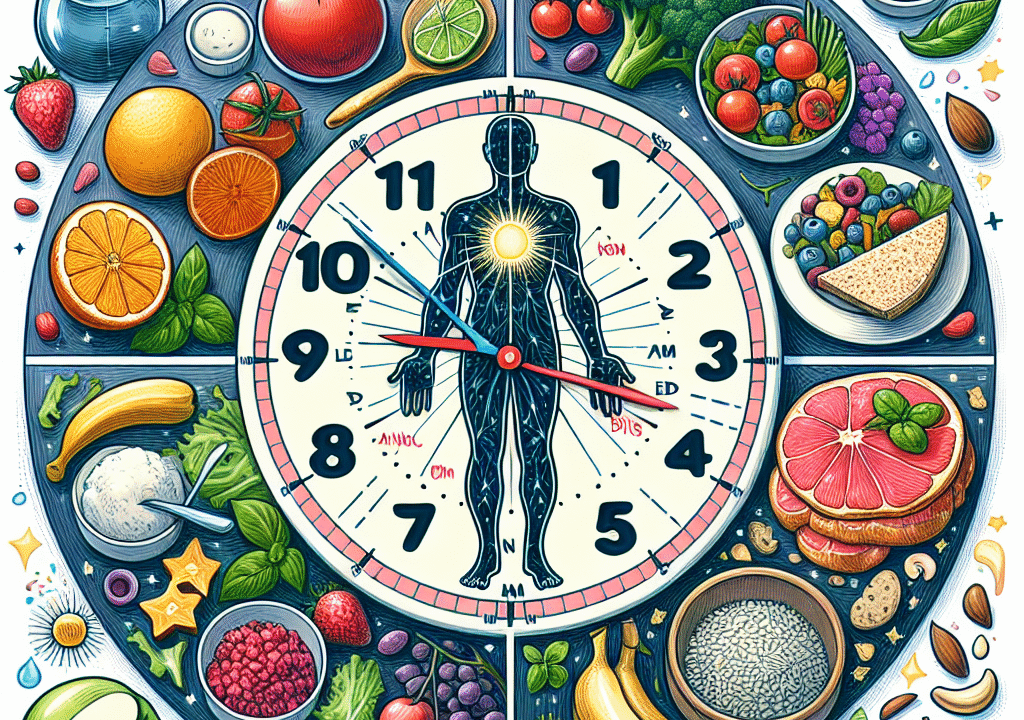
The 80/20 Approach That Makes Every Diet Actually Work Long-Term
If you’ve found yourself hopping from one intense diet to another, only to feel defeated and discouraged, you’re not alone. Around 45 million Americans start a new diet each year, yet the majority regain the weight within a year. This cycle of extreme restriction and yo-yo dieting can negatively impact both your physical well-being and mental health.
But what if there were a more realistic, balanced approach to eating? Enter the 80/20 rule for healthy eating—a flexible strategy that makes it easier to reach your goals while still enjoying your favorite foods.
In this guide, you’ll discover what the 80/20 rule is, why it’s more effective than traditional diets, how to implement it, and how to avoid common pitfalls along the way.
What Is the 80/20 Approach to Dieting?
The 80/20 approach to nutrition encourages eating healthy, whole foods 80 percent of the time, while allowing for indulgences during the other 20 percent. It replaces the perfectionist mindset with one rooted in balance and sustainability.
Here’s how it works:
– Out of 21 meals a week, aim to make about 17 focused on wholesome nutrition, while 4 can include your favorite treats.
– For example, eat nutrient-packed meals during the week, then enjoy pizza on Friday night or brunch with friends on Sunday.
As dietitian and author Dawn Jackson Blatner explains, “The 80/20 rule lets people enjoy small indulgences without feeling like a failure. It’s about balance, not restriction.”
This ratio provides a framework that supports physical health while fostering a more positive, guilt-free relationship with food.
Why the 80/20 Rule Works—Even When Other Diets Fail
Many diets are built around rigid rules and unrealistic expectations. The 80/20 eating plan offers a more adaptable structure that promotes consistency and psychological well-being—making it easier to maintain long-term.
Sustainability Over Perfection
Unlike diets that demand 100 percent compliance, the 80/20 rule grants you the freedom to enjoy life. This leads to greater consistency because you’re not constantly feeling deprived. Research indicates that flexible approaches to dieting result in better long-term dietary adherence and enhanced body image.
Enjoy Balanced Eating Without Guilt
One of the most powerful aspects of this method is its ability to reduce guilt. Instead of labeling foods as “bad” and feeling remorse after indulgences, you’re allowed to enjoy treats mindfully as part of your plan. This prevents the common cycle of bingeing followed by restriction.
Promotes a Healthy Relationship With Food
By avoiding the all-or-nothing mentality, the 80/20 rule supports healthy eating habits without promoting shame. You choose nourishing foods because they energize and support your goals—not as a punishment.
If you’re interested in optimizing overall wellness—including beyond nutrition—explore the comprehensive health resources from trusted platforms like edrugstore.com.
How to Start Using the 80/20 Rule
Applying the 80/20 lifestyle for sustainable wellness is easier than you might think. It doesn’t involve calorie counting or strict dieting—just intentional, informed choices made consistently throughout the week.
1. Prioritize Whole, Nutrient-Dense Foods
For your 80 percent, focus on meals packed with whole ingredients: vegetables, lean proteins such as fish or tofu, whole grains like oats or brown rice, and healthy fats such as avocado and olive oil. Stay hydrated and minimize processed foods.
Example: A lunch of grilled chicken, roasted vegetables, quinoa, and a drizzle of olive oil checks all the boxes for balanced, nourishing eating.
2. Plan for the 20 Percent
This isn’t permission to indulge with abandon—it’s about thoughtful enjoyment. Whether it’s dessert, wine, or snacks at a celebration, make those moments meaningful rather than mindless.
Example: Enjoy a slice of birthday cake or nachos during a sports game without judgment or guilt. It’s part of the plan.
3. View Your Week as One Unit
Instead of stressing over daily perfection, take a big-picture view of your weekly eating habits. This gives you the flexibility to adapt and stay in balance.
Example: If Wednesday included extra indulgences, support your goals by prioritizing healthy meals for the rest of the week.
4. Tune Into Your Body
Over time, many people find their cravings begin to shift. Your body may naturally start to favor foods that support energy, digestion, and vitality.
Tip: Consider keeping a journal of how you feel after different meals to identify which foods help you feel your best.
Common Mistakes to Watch Out For
Even flexible approaches like the 80/20 rule can veer off track if not used mindfully. Watch out for these pitfalls to maintain success:
A Misunderstanding of the 20 Percent
The 20 percent isn’t a pass to overeat or binge. It’s about small indulgences that satisfy cravings without sabotaging your progress. A few cookies or a slice of pizza is fine—five donuts daily is not aligned with the plan.
Unintentional Slide into 70/30 or Worse
It’s easy to consume extra calories from sugary drinks, convenience snacks, or alcohol. Maintain awareness and regularly reflect on your habits to stay near the intended 80/20 goal.
Lack of Planning for the 80 Percent
Eating well consistently requires preparation. Without a plan, you’re more likely to opt for unhealthy quick fixes.
Example: Stock healthy snacks like Greek yogurt, chopped carrots, or almonds to make healthy choices convenient and satisfying.
Final Thoughts: A Kinder, Smarter Way to Nourish Yourself
The 80/20 approach to mindful eating proves that nutrition doesn’t have to be all-or-nothing. You can maintain your health goals while still enjoying the special moments and foods that make life joyful.
This method focuses on building balanced eating habits you can maintain throughout your life. With this approach, birthday cake doesn’t derail your progress—it becomes part of a holistic lifestyle that nourishes both your body and your mind.
Because let’s be honest—life includes holidays, family dinners, celebrations, and the occasional treat-yourself moment. A rigid diet that excludes real-life experiences isn’t sustainable. The 80/20 rule allows you to live fully and make progress at the same time.
So go ahead—fill 80 percent of your plate with wholesome goodness, reserve 20 percent for joy, and commit to feeling 100 percent guilt-free about the foods you choose.
Take the First Step Toward Sustainable Success
Ready to break free from restrictive diets? Try the 80/20 method and see how it transforms your relationship with food and your overall wellness. Your body—and your peace of mind—will thank you.
References
1. CDC. “Attempting to Lose Weight and Strategies Used Among Adults in the United States.” National Health and Nutrition Examination Survey, 2018. https://www.cdc.gov/nchs/data/databriefs/db313.pdf
2. Blatner, Dawn Jackson. The Flexitarian Diet. McGraw-Hill Education, 2010.
3. Smith, Rebecca et al. “Flexible vs. Rigid Dieting: Associations with Eating Behavior, Psychological Well-being, and Weight-Loss Maintenance.” Journal of Behavioral Medicine, 2018. https://pubmed.ncbi.nlm.nih.gov/29804281/
For additional wellness support and convenient health resources, visit edrugstore.com.


